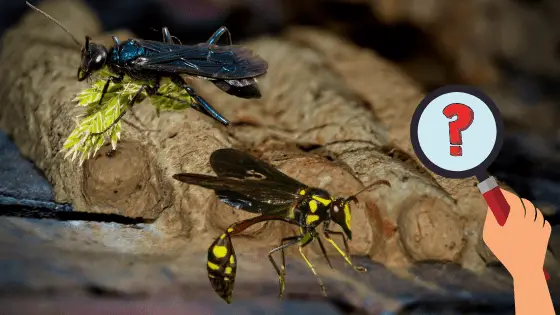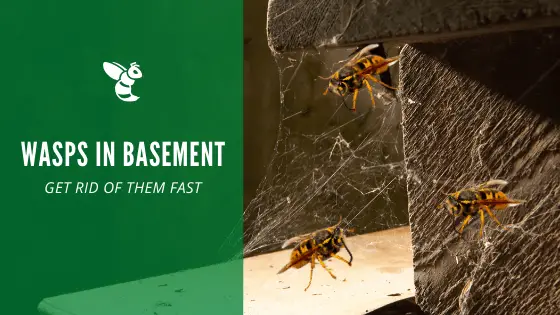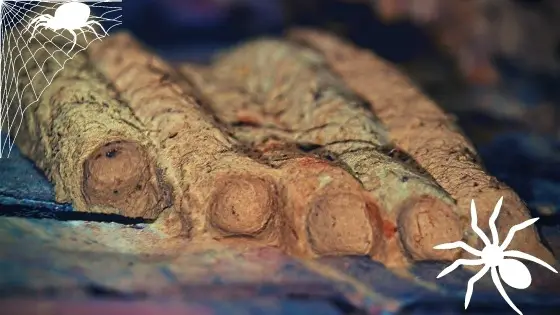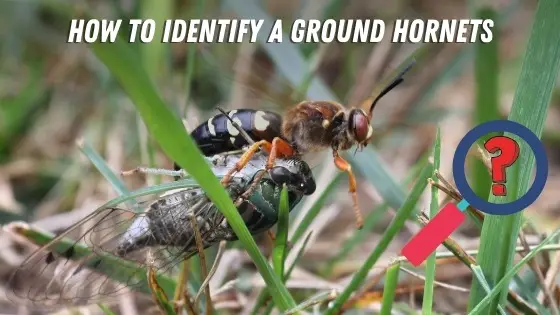Mud Dauber Wasp Facts & FAQs

Similar to other wasps for their buzzing behavior, mud daubers have a few characteristics that set them apart from other wasps. They are around one inch in size, and they can vary in color depending on the exact species. They are usually all black, black with a little yellow, or black with a tinge of blue. They are unique because they make their nests out of mud. Being solitary, one single mud dauber wasp is responsible for an entire nest.
What is the Average Lifespan of a Mud Dauber Wasp?
The mud dauber wasp goes through the life stages of egg, larvae, pupae, and adult. Aside from adulthood, the life cycles occur in the mud nest created by the adult females. The average life expectancy of a mud dauber is around one year.
Why are Mud Daubers in Your Attic?
In warmer climates, mud daubers will remain very active throughout the year. If they are located in an area where the temperatures become quite cold in the fall and winter, they will often try to make their nest somewhere warm and safe. This could be your attic, a garage, etc. If need be, they will go through their larvae and pupae stages when it is colder. When the temperatures warm up in the spring, the adults emerge. You may see minimal activity from the mud dauber, even if they’re inside of your attic during the winter.
How Do You Remove Stains Left Behind by Mud Dauber Nests?
Mud daubers may be beneficial to have in your yard, but their nests can leave a pretty bad mess in and around your home. If you don’t take care of the nest, it will continue to grow and grow, which will create an even bigger mess. If you have removed a mud dauber nest from your property, there are some ways that you can clean up the residual mess. Scrape off the leftover mud. The rest of the mud ring that’s left should come right off with just a little bit of soap and water.
Do Mud Daubers Come Out at Night?
Unlike other wasps, mud daubers don’t typically head back to their nests at sundown. They will find a location on a bush or nearby tree where they will spend the nighttime hours; weather permitting. The nests are used more for the juvenile mud daubers. The mothers will bring back food to the nest throughout the day.
Are Mud Daubers Dangerous?
While mud daubers can sting, they usually won’t sting a human unless they become extremely agitated. If they do sting you, it won’t hurt too badly. The only thing you’ll need to worry about is the potential for an allergic reaction. If you’re prone to reactions to other insect bites and stings, then you may experience the same symptoms for a mud dauber sting. Their sting is used to capture their prey for feeding purposes, so leaving them alone should keep you perfectly safe.
How to Keep Mud Daubers Out of Your Garage
Having mud dauber nests in your yard can cut down on many other insects, but you probably don’t want them to make their nest in your garage. The first sign that they’re starting to form a nest will be spots of mud in corners or crevices of your garage.
You’ll want to clean up their mess right away to deter them from continuing their project. They may try to come back to start over, but they will eventually move on when they realize their efforts aren’t working.
You can also use some natural methods to repel and prevent mud dauber nests. Peppermint oil is an essential oil that’s safe for humans, but mud dauber wasps hate the smell of it. Cinnamon oil and tea tree oil are also useful. Make a homemade spray with these essential oils, and spray it in the areas where you see mud daubers starting to assemble.
Spraying dish soap on their nests will cause the mud inside to soften and break down. It can also harm the mud daubers when it comes into contact with them.
What do Mud Daubers Eat?
Mud daubers are known for their ability to paralyze and capture a wide variety of spiders that are later placed within a cell in their home nest. Once the cell is completely filled with spiders the female mud dauber will deposit an egg into the cell seal it off with mud. The dauber larvae will hatch from its egg in the cell and feast on all of the spiders inside.
Adult mud daubers will typically feed on honeydew, nectar, and the body fluids from the spiders they capture.
How Do Mud Daubers Get in the House?
While it’s a little harder for mud daubers to get inside your home rather than your attic or garage, it’s possible if you have a lot of cracks and gaps around windows, doors, and your foundation. To prevent mud daubers from getting inside, do a perimeter sweep of your home. Seal up any spaces that you find that would provide easy access for insects to come in uninvited.
Mud daubers are usually pretty easy to get rid of on your own. Because one mud dauber is typically responsible for the whole nest, you won’t see a slew of them coming out when you try to remove the nest. Also, they don’t return to their nest in the evening, so you can remove and destroy the nest as needed.



